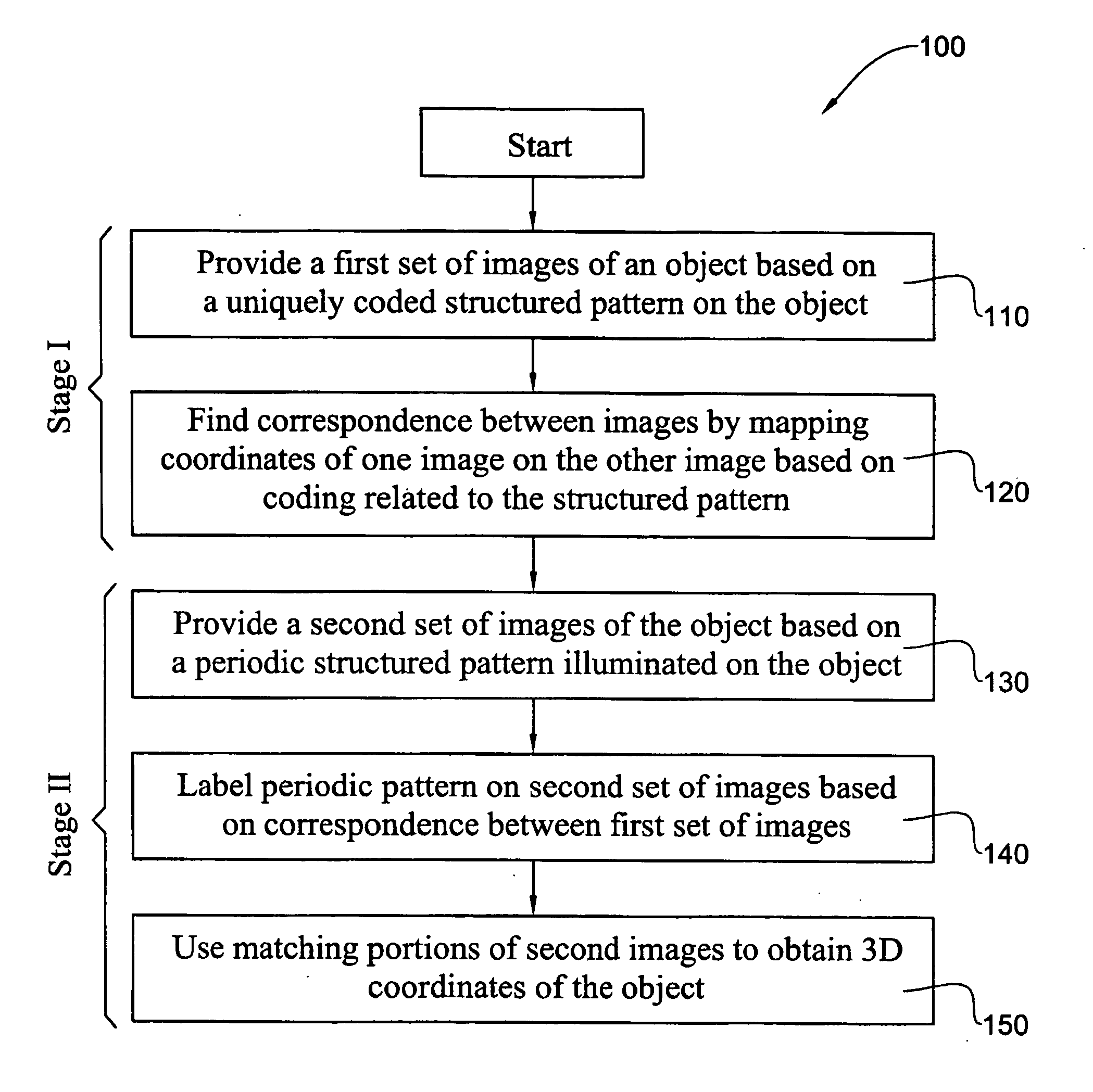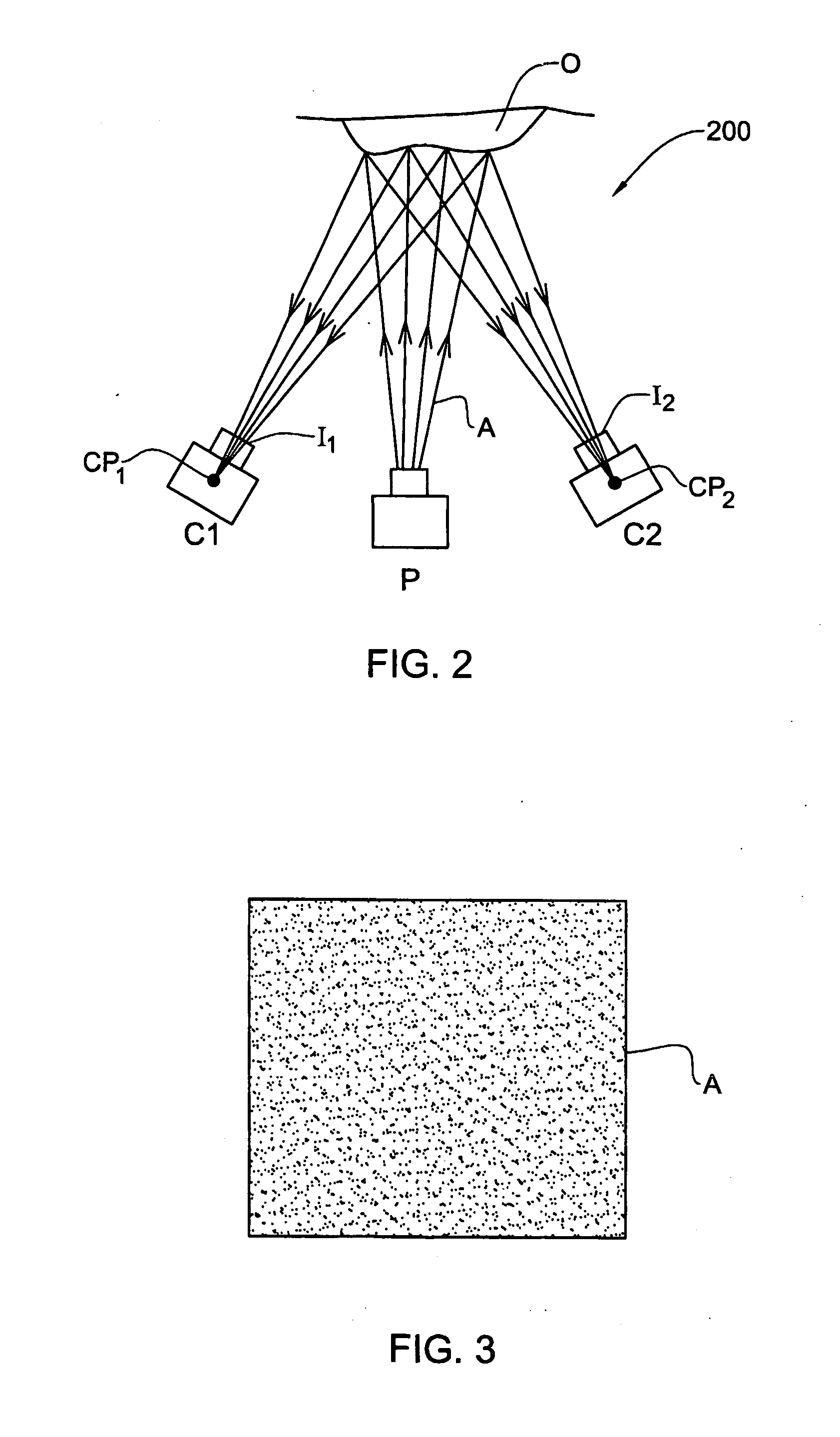Method and system for the three-dimensional surface reconstruction of an object
a three-dimensional surface and object technology, applied in the field of three-dimensional surface reconstruction of objects, can solve the problems of slow data acquisition rate, large data acquisition time, and often impracticality, and achieve fast and accurate 3d reconstruction and labeling. accurate and fast
- Summary
- Abstract
- Description
- Claims
- Application Information
AI Technical Summary
Benefits of technology
Problems solved by technology
Method used
Image
Examples
Embodiment Construction
[0069] An embodiment of the method of the invention, generally designated with the reference numeral 100, is illustrated in FIG. 1. In a first stage, Stage I, of the method, and also referring to FIGS. 2, 3 and 4, an object O is illuminated with a structured illumination, such that a unique coding (light pattern) may be concentrated in a single illumination. As illustrated schematically in FIG. 3, such a structured illumination typically comprises spatial coding in the form of a random or quasi random pixel pattern, A, such that preferably each matrix of [n×m] pixels in the pattern is unique. In this embodiment, the pixel pattern A is essentially a two-dimensional gray scale, wherein the pixels are colored black or white. The distribution of black and white pixels may be random. Alternatively, the distribution may be “quasi-random”, i.e., specifically designed so that for any matrix of [n by m] pixels within the grid (pattern), there is a unique permutation of white and black pixels...
PUM
 Login to View More
Login to View More Abstract
Description
Claims
Application Information
 Login to View More
Login to View More - R&D
- Intellectual Property
- Life Sciences
- Materials
- Tech Scout
- Unparalleled Data Quality
- Higher Quality Content
- 60% Fewer Hallucinations
Browse by: Latest US Patents, China's latest patents, Technical Efficacy Thesaurus, Application Domain, Technology Topic, Popular Technical Reports.
© 2025 PatSnap. All rights reserved.Legal|Privacy policy|Modern Slavery Act Transparency Statement|Sitemap|About US| Contact US: help@patsnap.com



